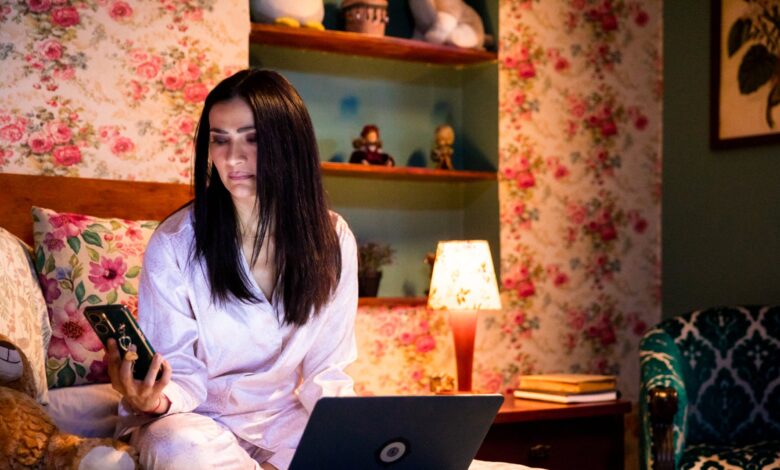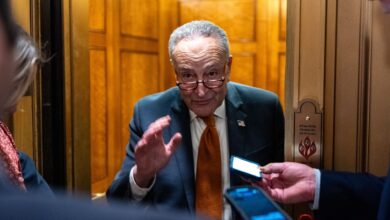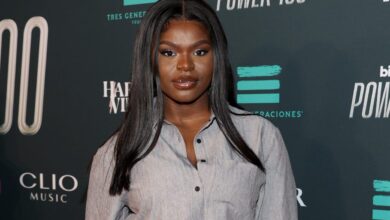Why Latin Americans Are Looking Forward to the New ‘Betty La Fea’

When “Yo Soy Betty, La Fea” aired its first and only season in 1999, no one could have imagined the impact a Colombian telenovela about Betty Pinzón, an eccentric, entrepreneurial Latina protagonist navigating her career and love life, would have on millions of people around the world. The show has been televised in 180 countries, dubbed into 15 languages, and remade into 28 international adaptations—with one of the most prominent remakes starring America Ferrera as “Ugly Betty“
In “Betty La Fea” — and every version since — Betty’s long, curly black hair, oversized glasses, mouth full of braces, and bushy eyebrows have drawn the undeserved disgust and anger of most of her co-stars. Her appearance is the running theme of every episode, which is fitting, since the Spanish title means “I am Betty, the Ugly One.” But for countless Latinos who grew up on the show, Betty was a beacon of hope for those of us growing up in Latin culture is obsessed with beauty..
Betty’s perseverance while struggling with the pressures of society’s beauty standards has made her one of the most relatable television characters of our time and certainly played a role in making “Betty La Fea” a most successful telenovela in history. More than two decades after the original series’ release, Betty returns to the small screen in Prime Video’s sequel “Betty La Fea, The Story Continues.“The film will be available to stream on July 19 with the original cast, including Ana María Orozco in the title role. She is now in her 40s, elegant looking and considered a successful woman, mother and wife. But with her return, Betty has returned to remind us and those around her that her success was never solely dependent on her appearance. In fact, that was the first lesson Betty taught us at the beginning of the series “Betty La Fea” in 1999.
Before the sequel is released, it’s important to relive the original. In the first episode of the telenovela, two job seekers are interviewed for the same assistant position at the fashion company Ecomoda. While the hiring managers stare at the blonde, blue-eyed candidate Patricia, they stare and frown at Betty. Betty knows from their reactions that she made the right decision not to include a headshot on her resume, or she likely wouldn’t have gotten this far in the hiring process. Even after meeting her, Ecomoda president Armando realizes that Betty has the expertise and ability to advance the company’s needs, and he hires both of them—much to the chagrin of the hiring managers.
In the 2006 American film adaptation of “Ugly Betty,” Betty Suarez flitted back and forth between the 2000s American culture’s obsession with thinness and the Latin American culture’s obsession with curviness. Her peers openly mocked her body, often going so far as to imply that Betty was unworthy of the designer clothes or work opportunities she had because they thought she was unattractive. Meanwhile, in Colombia, where plastic surgery and cosmetic surgery are common and popular throughout the rest of Latin America, Betty Pinzón faced countless comments about how even plastic surgery could not make her beautiful. Instead of being discouraged by their comments, Betty dealt with her feelings and confidently continued to pursue and achieve her dreams.
While we are currently living in a post-Mistress a world where female empowerment is popularly portrayed in TV shows and movies like “2023”Barbie doll,“‘Betty La Fea” challenged the definition of beauty around the world, especially in the Latino community, in the early 21st century. For many Latinos who grew up watching ‘Betty La Fea’ and ‘Ugly Betty,’ the show was more than just a witness to our cultural struggles with impossible beauty standards reflected on screen. Now, we have our own Latina heroine who challenged beauty norms and succeeded despite facing misogyny at every turn.
In 2024, Betty continues to demonstrate the power of self-confidence in the face of adversity and the modern problems that come with being an ambitious career woman, mother, and spouse. She works to break generational trauma by mending her relationship with her teenage daughter Mila and encouraging her to pursue her ambitions in fashion. Finally, when Betty returns to Ecomoda, where her story began, we see her confront Armando, Marcela, and other characters who continually undermine and belittle her.
While Betty currently looks very beautiful in her usual style in “Betty La Fea, The Story Continues,“Life isn’t necessarily easier because of it. In fact, when Betty is faced with difficult decisions that will change the trajectory of her family’s success and her romantic relationships, she trades her fancy clothes and sleek hair for an old secretary-themed wardrobe and returns to her old curly hairstyle, complete with bangs she cut herself. As Betty takes the time to learn new lessons in these new parts of her career, parenthood, and love life, she’s preparing herself to share the most real, vulnerable, and powerful version of herself we’ve ever seen.
Zameena Mejia Zameena is a Dominican-American freelance writer born and raised in New York City. She is passionate about storytelling and elevating diverse voices in the Latinx beauty, health, and lifestyle space. Zameena holds a BA in journalism and Latin American studies from the State University of New York at New Paltz and an MA in business reporting from the Craig Newmark Graduate School of Journalism.




